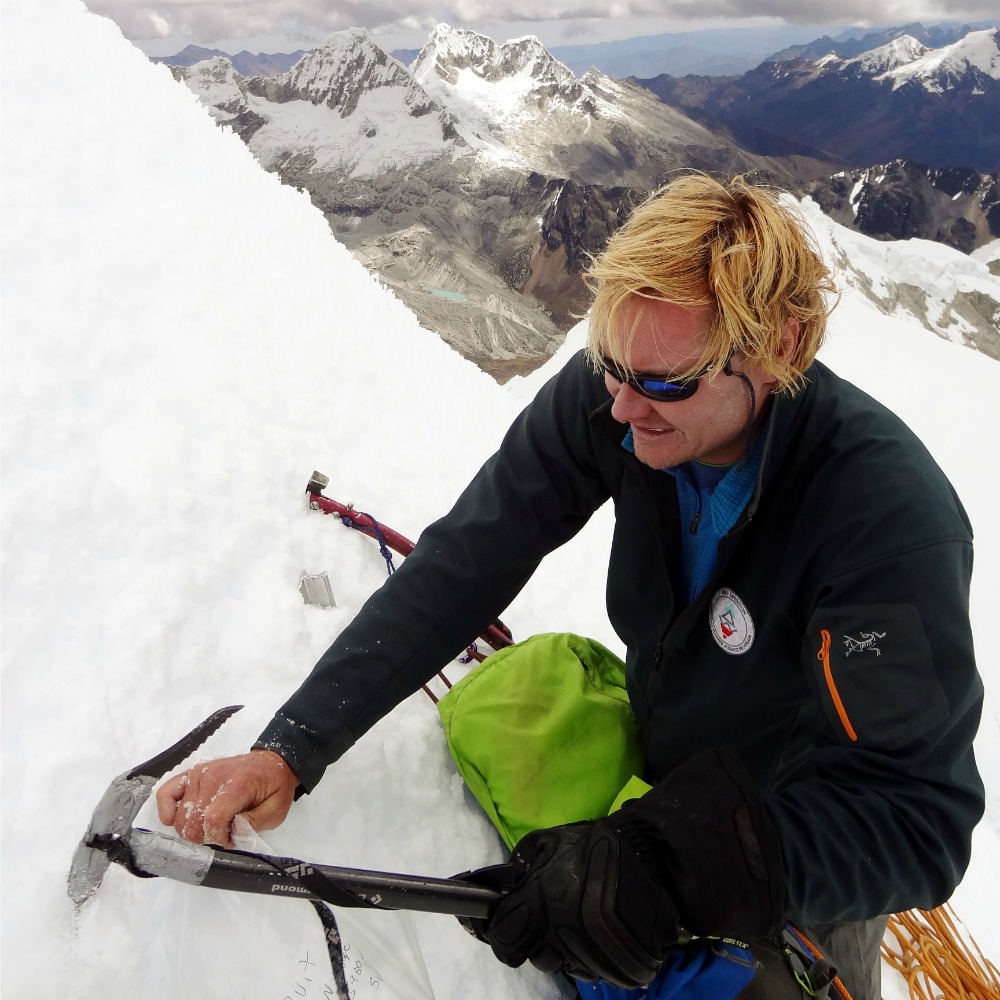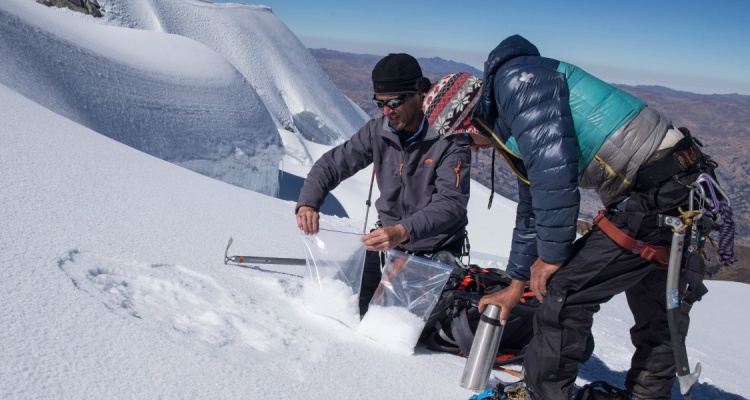The American Climber Science Program. ACSP conducts and facilitates research and conservation in remote and mountain environments and provide opportunities for education and true exploration. We spoke with ACSP Executive Director John All about their black carbon. Photos, unless otherwise indicated, are by Steve Byrne.
1. Much of Climber Science’s research is focused on black carbon, which may be a contributor to glacier melt. What tools do you bring to collect and manage samples?
With our snow and ice collection, the tools depend on how we are analyzing the samples. With one technique, we filter the snow as soon as we arrive back to base-camp after summiting. That one is relatively straightforward and all we do is put the snow in ziplock bags to transport down the mountain. We carry a gallon of snow per sample and so the weight of these can add up to over 60 lbs by the time we get back to camp.
With our other major analysis technique, we must bring the samples still frozen back to Colorado. Thankfully these samples are just small jars (that have been sterilized) and so the space and weight is minimal. But Peru is actually pretty close to the equator and so it is pretty hot when we go down to low elevations. So we have to pack each sample in snow in a thermos and then pack the thermoses in coolers also filled with snow. In town, we leave them in freezers and unfortunately if the power goes off, we lose our samples. In 2015 we lost our entire season’s samples and it was pretty devastating.
2. How do you decide where to take samples?
We select peaks to climb based upon their location with respect to mines, towns, agricultural areas and other possible pollution sources. We want to see where the dust that covers mountains comes from. We also select our research locations based upon human use. If people need to understand how their environment is changing in order to survive – if their farming or grazing or water on the high mountains is being directly affected by climate changes – then we try to work in these areas as well and lend a helping hand.

After sampling, climbers descend from the summit of Vallunaraju, 18,963 ft, in the Cordillera Blanca of Peru
3. Climber Science invites a large number of students and scientists to participate in its expeditions to Peru. Why so many people?
Environmental research is manpower intensive and we collect a whole lot of data. We study water quality and vegetation changes due to climate change and dust on glaciers and many more topics. So we need help. But we also know that the best way to help new people understand environmental issues is to let them visit a place and get involved. We want to create an ethic of volunteerism and a passion to preserve our environment among the volunteers who work with us. We don’t do that by preaching, we just let people experience things and see for themselves. No one ever comes back unchanged – for the better!
4. Besides journal publications, how do you and your fellow scientists communicate the results of your research and expeditions?
We work closely with local stakeholders – mountain communities, national park staff, government agencies, and others – to communicate our findings and try to find ways to improve local conditions. We also give talks in the US to try and encourage people to understand these issues and help improve things. We give workshops in the local countries to help teach local people how to collect their own data and/or how to take advantage of the information we have found – how small changes can improve their use of their natural resources. And as professors, our experience goes into every class we teach.
5. How can other alpinists support or participate black carbon research?
Join our expeditions! We are visiting Costa Rice and Peru this summer and these two areas are our long-term research locations. We also frequently work in Nepal and will have trips to Chile and Tanzania in the not-too-distant future.
If you are unable to join an expedition, we can also use donations of gear – we take students from both the US and from the local countries into the mountains and they often cannot afford to buy all of the equipment needed. Donated tents and sleeping bags and ice axes and crampons help these students venture into places they may never see otherwise. We have some graduate students working in Peru that use donated equipment every week for data collection trips into the mountains.
You can learn more about our expeditions and donating at www.climberscience.com
6. What 2-3 electronic devices do you need to keep charged in the field? (I have this from your previous email)
We have two levels of charging – basecamp and high camps. At basecamp, we charge everything from laptops to satellite phones, cameras to ipods, even the cell phones of our local cooks. We constantly juggle one device to another on the solar panels. I’ve tried a lot of them over the years working in the Himalaya and Africa, but I quickly figured out the best and always use Voltaic panels and batteries.
High camps are more difficult because it is so heavy to carry things to 20,000 ft and beyond. That is why I was so happy Voltaic developed minimalist solar kits that we could take to higher elevations. Our cameras, GPSs, satellite phones, and iPods go everywhere with our teams and so we need power up to the summit of Everest (ok, I admit I only carried the Voltaic panel to Camp 3 at 8300m). Working in these environments, we have to trust our gear because if it fails, we have wasted our time, and perhaps lost our lives…
About John: Dr. John All is a geoscientist whose life has been devoted to exploration around the world as he examines how climate change and resource management interact to impact communities and the biosphere in mountainous regions. He is currently an Associate Professor of Environmental Geography at Western Kentucky University, as well as the Co-Founder and Executive Director of the American Climber Science Program.




Leave a Reply